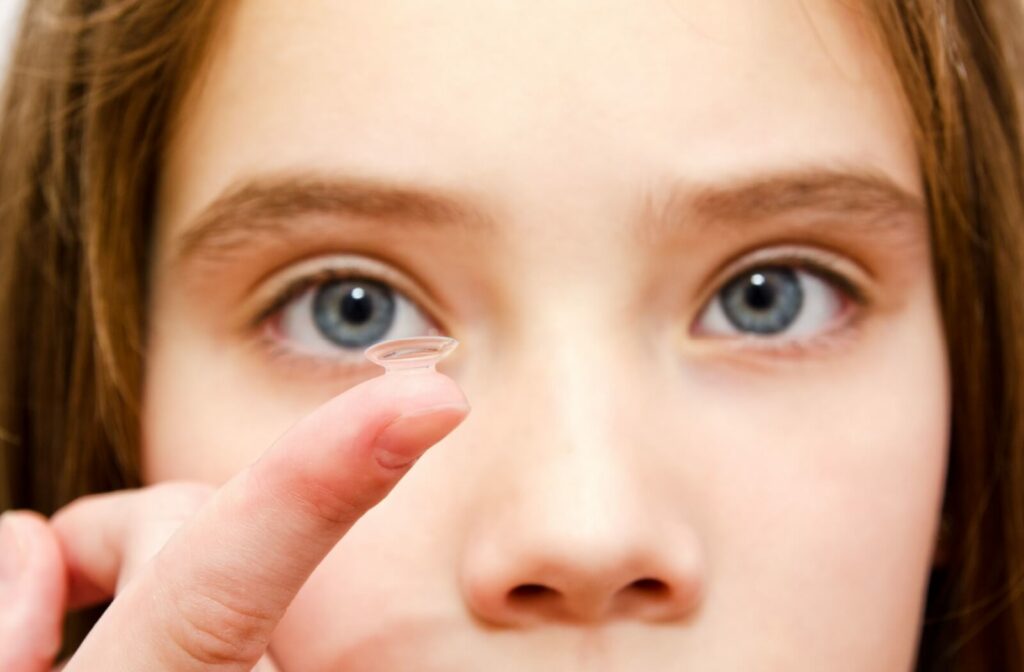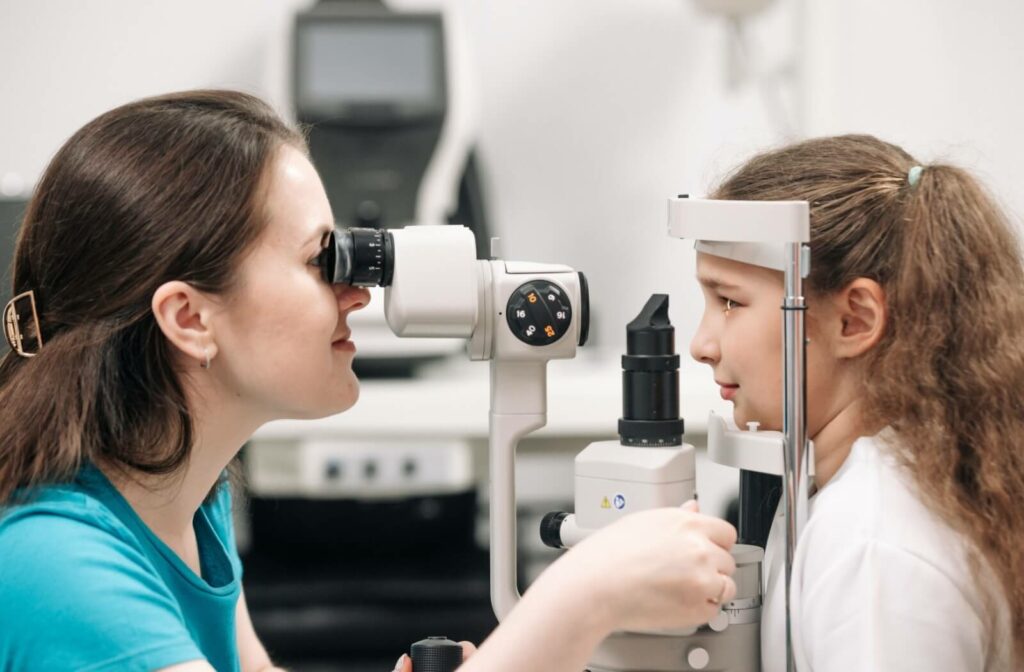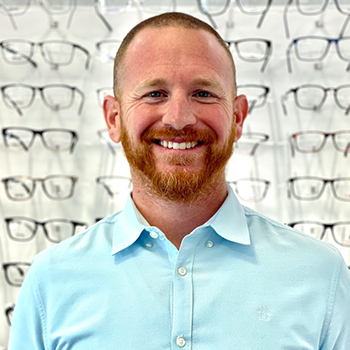Finding out your child has myopia can feel like a lot. Naturally, you want to do everything possible to protect their vision and support their long-term eye health. A common question parents ask is: Can myopia be reversed?
The short answer is no—once myopia develops, it can’t be reversed. But that doesn’t mean you’re out of options. Modern treatments can slow down the progression of myopia, helping reduce the risk of more serious eye conditions later in life.
After a comprehensive eye exam, your child’s eye doctor can offer personalized advice on which myopia management approach will be most effective.
What Is Myopia?
Myopia, also known as nearsightedness, is a condition that makes it difficult to see objects clearly at a distance. It happens when the eye becomes too long from front to back, causing light to focus in front of the retina instead of directly on it. The result: blurry distance vision.
Most children develop myopia between the ages of 6 and 14. During this growth period, their eyes are still changing, which can cause prescriptions to shift quickly year after year.
Common signs of myopia include:
- Squinting to see faraway objects
- Moving closer to screens or the classroom board
- Holding books very close while reading
- Frequent headaches or complaints of eye strain
- Difficulty seeing clearly while playing sports or outdoors
Why Myopia Can’t Be Reversed
Once the eye stretches and grows longer, that structural change is permanent—kind of like how your child won’t shrink after a growth spurt. Because of this, myopia can’t be cured or reversed.
But here’s the good news: while we can’t shorten the eye, we can slow down how quickly it keeps growing. That’s where myopia management comes in.
Why Slowing Myopia Progression Matters
It’s easy to assume that glasses or contact lenses are all a child needs to manage their nearsightedness. But what many people don’t realize is that higher levels of myopia increase the risk of serious eye conditions later in life.
These include:
The higher the myopia, the greater the risk. By slowing progression early, you’re protecting your child’s vision both now and in the future.
When to Consider Myopia Management
Myopia management is most effective when started as early as possible—ideally right after diagnosis or when a child’s prescription starts changing rapidly.
You may want to explore treatment if:
- Your child has been diagnosed with myopia at a young age
- Their prescription has increased significantly in a short time
- There’s a family history of nearsightedness
- Your child spends limited time outside
- They spend long hours on close-up activities (reading, homework, screens)
Myopia Management Options

Today’s treatment options are both safe and science-backed. The right one will depend on your child’s age, daily habits, and how quickly their prescription is changing.
Orthokeratology Lenses (Ortho-K)
Ortho-k lenses are worn overnight and gently reshape the cornea while your child sleeps. During the day, they can see clearly without glasses or contacts.
Ortho-k might be a good fit if your child:
- Plays sports or swims regularly
- Wants to avoid wearing glasses during the day
- Can manage a nighttime lens routine with adult supervision
These lenses have been shown to significantly slow down myopia progression in children.
MiSight® 1 Day Contact Lenses
MiSight lenses are daily disposable soft contacts designed specifically to correct vision and slow down myopia at the same time. They work by gently redirecting light in a way that reduces the eye’s tendency to grow longer.
They’re a great choice for kids who are new to contacts or prefer a low-maintenance option with no cleaning required.
Low-Dose Atropine Eyedrops
Atropine eyedrops are a noninvasive treatment applied once daily, usually at night. In low doses, they’ve been shown to slow down the progression of myopia while minimizing side effects like light sensitivity or blurred near vision.
Atropine may be ideal for children who are too young for contact lenses or who aren’t ready for the responsibility that comes with lens care.
Lifestyle Habits That Support Eye Health
In addition to treatment, small everyday changes can go a long way in supporting your child’s vision.
- Spend more time outdoors. Natural light helps protect developing eyes.
- Follow the 20-20-20 rule. Every 20 minutes of close work, look 20 feet away for 20 seconds.
- Encourage proper screen distance. Teach kids to hold books and devices at arm’s length.
- Limit recreational screen time. While screens don’t directly cause myopia, prolonged close-up focus can make it worse.
- Ensure good lighting during reading and homework. Poor lighting can lead to eye strain and fatigue.
Start Early, Stay Ahead
While we can’t undo myopia, we can take meaningful steps to slow it down and protect your child’s long-term vision. The earlier we intervene, the more effective treatment can be.
Before the school year starts, give your child the advantage of clear, healthy vision. Book a comprehensive eye exam today with Dr. Bittel Optometry to explore customized myopia management options that fit your child’s lifestyle and needs.


